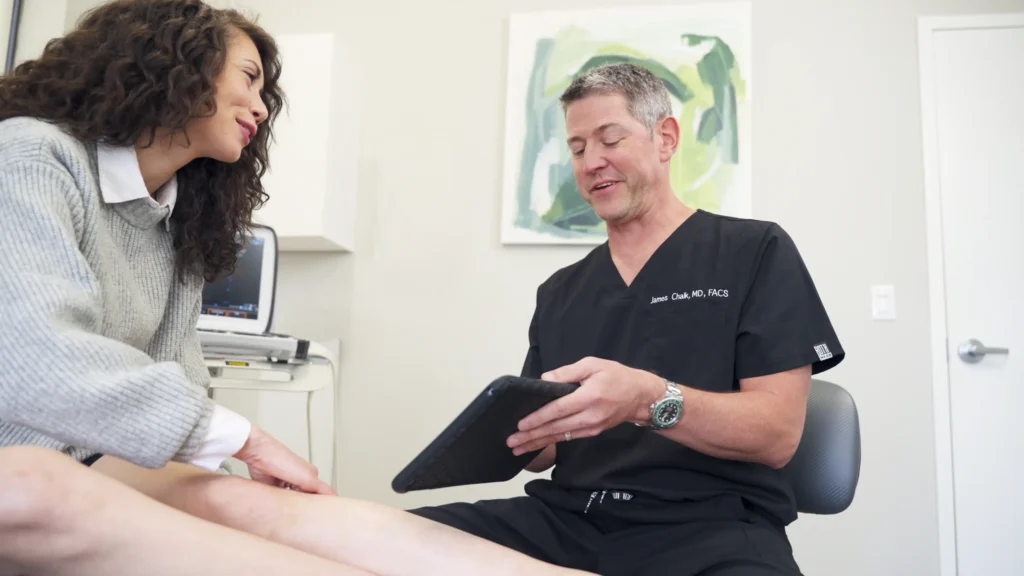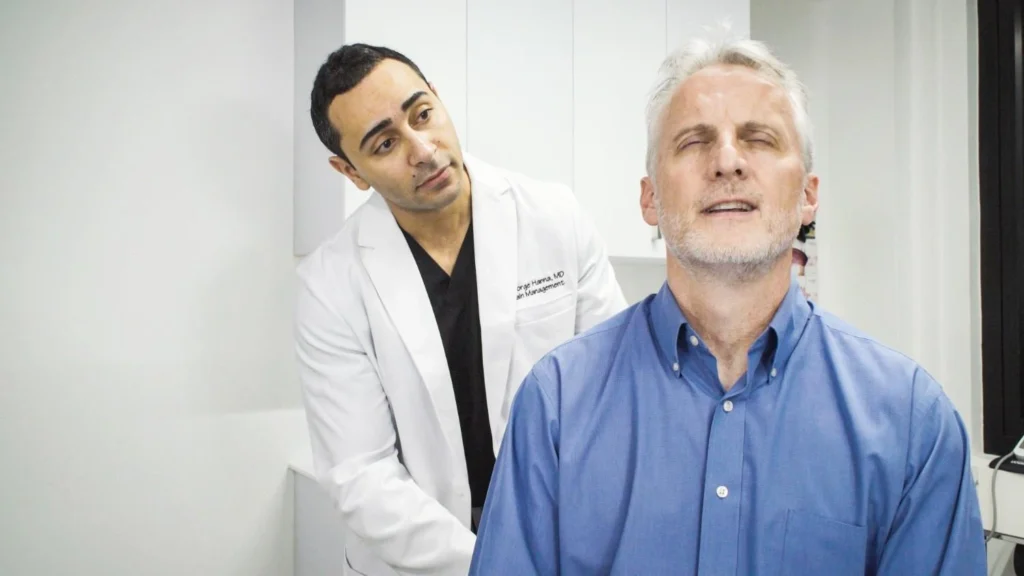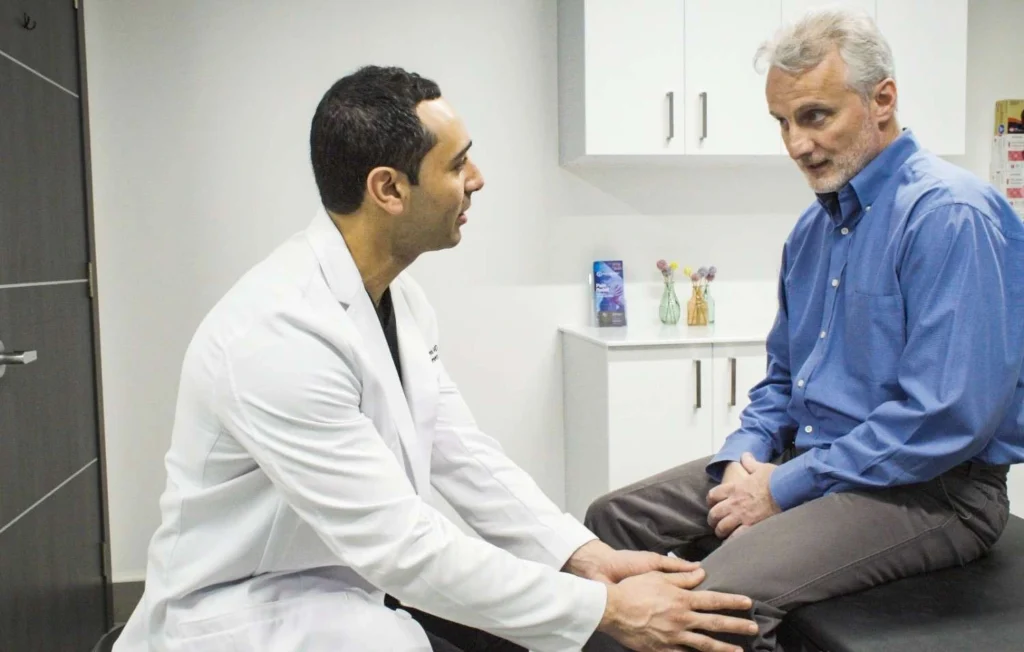How Does Spider Vein Removal Work? Is It Good for Your Legs?
You step out on a beautiful summer day, excited to enjoy the warmth, but hesitate to wear shorts or a dress because of the web-like spider veins on your legs. You’ve tried various creams and home remedies, but the spider veins persist, affecting your confidence and perhaps even your comfort. Spider veins are a common issue, but fortunately, there are effective solutions available that not only improve your appearance but also enhance your overall leg health.
At VIP Medical Group, we specialize in providing minimally invasive spider vein treatments that target both the visible veins and their underlying causes. In this article, we’ll take you through the process of spider vein removal and the benefits for your legs. Understanding the spider vein treatment process will help you make an informed decision.
What Causes Spider Veins?
Before diving into the process of spider vein removal, it’s important to understand what causes spider veins. These small, twisted veins appear just beneath the surface of the skin, often on the legs or face. The root cause is usually chronic venous insufficiency, where the blood doesn’t flow properly through the veins. Factors such as genetics, prolonged standing or sitting, pregnancy, and aging can all contribute to the development of spider veins.
The Spider Vein Removal Process
Spider vein removal involves several different techniques, each meant to eliminate or reduce the appearance of these veins while improving your leg health. At VIP Medical Group, our vein specialists diagnose the root cause of your spider veins using advanced duplex ultrasound technology. Once the cause is identified, a personalized spider vein treatment plan is developed. Here’s a breakdown of the most common spider vein treatments we offer:
Sclerotherapy
Sclerotherapy is one of the most widely used and effective treatments for spider vein removal. During this procedure, a vein specialist injects a solution directly into the affected veins. This solution irritates the vein walls, causing them to collapse and eventually be reabsorbed by the body. The blood that previously flowed through these veins is rerouted through healthier veins. Sclerotherapy is minimally invasive, and most patients notice significant improvements in both appearance and symptoms after just a few sessions.
Endovenous Laser Ablation (EVLA)
Endovenous Laser Ablation, or EVLA, is another minimally invasive vein treatment for venous insufficiency, the root cause of spider veins. In this procedure, a small laser fiber is inserted into the vein, delivering targeted energy that closes the problematic vein. The body then naturally absorbs the treated vein over time. EVLA is highly effective for larger, deeper veins and can provide long-lasting relief from symptoms like leg pain, heaviness, and swelling.
Radiofrequency Ablation (RFA)
Radiofrequency Ablation (RFA) uses radiofrequency energy to heat and close off the affected vein. This technique is especially effective for larger varicose veins and chronic venous insufficiency, which may be contributing to the appearance of spider veins. RFA is performed under local anesthesia, and patients can usually resume normal activities within a day.
VenaSeal
VenaSeal is a newer, innovative vein treatment. Instead of using heat or injections, VenaSeal closes the affected vein with a medical adhesive. This procedure is quick, effective, and doesn’t require compression stockings, making it a convenient option for many patients. This procedure also treats underlying chronic venous insufficiency or varicose veins.
Ambulatory Phlebectomy
For more visible veins, ambulatory phlebectomy may be recommended. This procedure involves physically removing the affected veins through small punctures in the skin. While it sounds more invasive, it’s performed under local anesthesia and typically has a very short recovery time. However, this procedure is generally meant for varicose veins—not spider veins.
Is Spider Vein Removal Good for Your Legs?
Absolutely. While spider veins are often viewed as a cosmetic issue, they can indicate underlying vein problems like venous insufficiency, which can negatively affect your leg health. Removing spider veins and treating underlying vein disease not only improves the appearance of your legs but also alleviates symptoms like leg pain, swelling, heaviness, and fatigue. Additionally, spider vein treatments can prevent the condition from worsening and reduce the risk of developing larger varicose veins or more serious complications such as blood clots.
By improving blood flow in the legs, spider vein removal can help you maintain better leg health in the long term. Patients often report feeling more comfortable and confident after treatment, especially when standing or walking for long periods. If you’re dealing with discomfort or simply want to enhance the appearance of your legs, spider vein removal is an excellent option.
Spider Vein Removal FAQs
Is Spider Vein Removal Painful?
Most spider vein treatments are minimally invasive and cause little to no discomfort. Procedures like sclerotherapy involve small injections, which may cause a slight sting, while treatments like EVLA and RFA are performed under local anesthesia to ensure comfort. Recovery is typically quick, and any mild discomfort usually resolves within a few days.
How Effective Is Spider Vein Removal?
Spider vein removal is highly effective, especially when performed by a trained vein specialist. Treatments like sclerotherapy have a success rate of over 90%, with many patients seeing a significant reduction in the appearance of spider veins after just one or two sessions. More advanced treatments like EVLA or RFA are known for their long-lasting results.
How Long Is the Recovery Time?
Recovery time varies depending on the treatment. Sclerotherapy, for example, typically requires no downtime, and patients can resume most activities immediately. Procedures like EVLA or RFA may involve a brief recovery period, but most patients return to normal routines within 24 hours. Your vein specialist will provide detailed aftercare instructions tailored to your plan.
Are There Any Risks Associated with Spider Vein Removal?
Spider vein removal is generally safe, with minimal risks. However, as with any medical procedure, there can be potential side effects, such as bruising, swelling, or temporary skin discoloration. In rare cases, more serious complications like blood clots can occur, but these risks are minimized when you choose an experienced vein specialist at VIP Medical Group.
Is Spider Vein Removal Covered by Insurance?
Many patients wonder whether their spider vein treatment will be covered by insurance. While spider veins are often considered a cosmetic issue, the root cause—venous insufficiency—is a medical condition. If you are diagnosed with venous insufficiency, your treatment may be covered by insurance, including sclerotherapy. At VIP Medical Group, we offer free insurance verification to help you navigate your coverage options.
Spider vein removal not only improves the appearance of your legs but also enhances your overall leg health by addressing the root causes of spider veins, such as venous insufficiency. At VIP Medical Group, our board-certified vein specialists use state-of-the-art techniques to ensure optimal results with minimal downtime. If you’re considering spider vein removal, contact us to schedule a consultation or visit your nearest vein clinics to learn more about our minimally invasive vein treatments. Don’t let spider veins affect your confidence or leg health.





